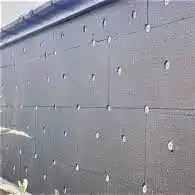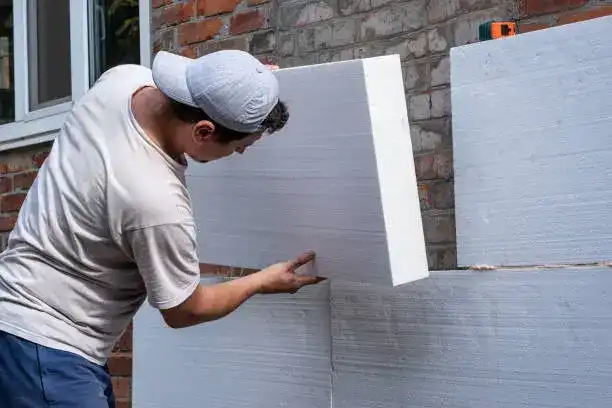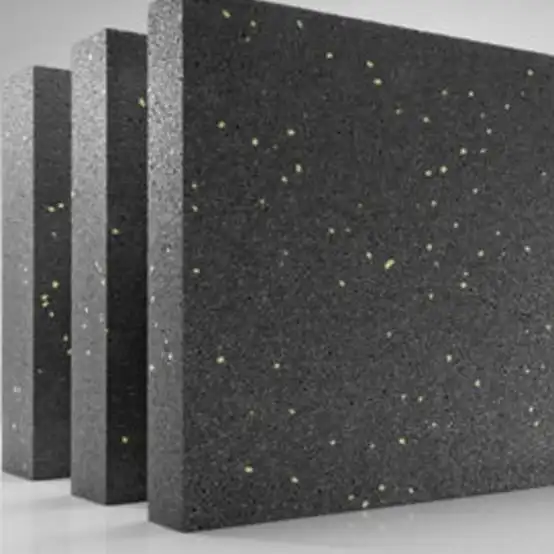Saving energy and helping the environment are huge priorities for homeowners today. EPS foam sheets have become a favorite choice for insulating homes. These light, sturdy materials keep homes warm, stop moisture, and are easy to put up—great for DIY projects. Whether you’re sprucing up your attic or insulating your basement, EPS foam sheets are a wallet-friendly way to make your home comfier and lower your energy bills.

The Role of EPS Foam Sheets in Modern Home Insulation
EPS, or Expanded Polystyrene, foam sheets are a hit in construction. They’re awesome at trapping heat or keeping it out. Plus, they work well for all sorts of jobs.
What Are EPS Foam Sheets Made Of?
EPS foam sheets start as tiny polystyrene beads. Steam puffs them up, and then they’re molded into strong panels. HUASHENG, a leading EPS foam maker, uses clever machines and worldwide expertise. Their EPS is fantastic for density, toughness, and keeping things warm or cool. The beads are all the same size, flow nicely when shaped, and set quickly. They pop out of molds fast on automatic machines and cool down in a snap with vacuum systems. The finished panels bond tightly, take hits without breaking, and work best when expanded 40–65 times.
Key Thermal Properties That Enhance Energy Efficiency
EPS foam sheets stop heat from moving easily. They keep your home warm in winter and cool in summer. The S-33 grade has super low thermal conductivity—less than 0.033W/M.K. Regular EPS sits at 0.039W/M.K. So, S-33 is over 20% better at insulating. This helps your house stay comfy all year. It also cuts down on heating and cooling bills.
Comparison with Other Common Insulation Materials
EPS beats materials like fiberglass or mineral wool in big ways. It handles water much better. Plus, it keeps its shape over time. Spray foam needs fancy tools and pros to install. But EPS is easy to cut and put up without special gear. HUASHENG makes light, energy-saving EPS. It’s still super strong. This makes it a top pick over older insulation types.
Enhancing Indoor Comfort with EPS Foam Sheets
EPS doesn’t just save energy. It makes your home feel nicer by controlling temperature, blocking dampness, and even quieting things down a bit.
How EPS Helps Maintain Consistent Indoor Temperatures
EPS acts like a barrier to stop heat from sneaking in or out. It keeps rooms warm when it’s cold outside and cool when it’s hot. This means you use heaters or air conditioners less, saving money and energy.
Moisture Resistance and Its Impact on Indoor Air Quality
EPS doesn’t soak up water like some other insulators. Its steady size stops mold and damage from trapped water. This keeps the air in your home fresher and safer for everyone.
Sound Dampening Benefits of EPS in Residential Settings
EPS isn’t built just for silencing noise, but its thick structure helps a little. It can cut down on sounds coming through walls or from outside, making your home a bit quieter.
Installation Considerations for DIY Homeowners
One of the coolest things about EPS foam sheets is how simple they are to install. Even new DIYers can manage with just a few basic tools.
Tools and Materials Needed for Proper Installation
To set up EPS panels at home, grab these:
- A utility knife or hot wire cutter
- A measuring tape
- Glue or screws to secure panels
- Safety goggles to keep your eyes safe
- A caulking gun to fill gaps
These tools make cutting and placing panels a breeze.
Step-by-Step Guide to Installing EPS Foam Sheets
How you install EPS depends on where it’s going in your home. Here’s the right way to do it.
Wall Applications
Clean the wall first. Spread glue on the back of each EPS panel. Press it hard onto the wall, starting from one corner. If you need more support, use screws or fasteners. Make sure it fits tightly.
Roof and Attic Applications
Cut EPS panels to fit snugly between roof beams or attic joists. Hold them in place with glue or screws with washers. Seal all edges with tape or caulk to block air leaks.
Floor Insulation Techniques
If needed, put down a vapor barrier first. Lay EPS boards over the floor, keeping edges close together. Cover with plywood or another base layer before adding your final floor. This keeps things warm and tight.
Common Mistakes to Avoid During Installation
Don’t squash the foam too much—it can lose its insulating power. Also, seal all edges carefully. Gaps let heat escape, called thermal bridging, which wastes energy and weakens your insulation.

Long-Term Benefits of Using EPS Foam Sheets
Picking high-quality EPS insulation pays off over time. It saves money and needs little upkeep, making it a smart choice for any home.
Energy Savings Over Time
EPS keeps heat from leaving or entering your home. This lowers your energy bills every month. Using it on walls, roofs, and floors means big savings year after year.
Durability and Maintenance-Free Performance
HUASHENG makes strong EPS materials for all kinds of uses, including recycled EPS for green projects. When installed right, these panels stay tough and don’t sag or settle. They need almost no care for years.
Environmental Impact and Recyclability
HUASHENG’s factory follows strict eco-friendly rules. Their REPS uses 100% recycled materials and recycles over 95% of waste. This makes EPS a great choice for homeowners who want to build green.
Expert Tips for Maximizing the Effectiveness of EPS Insulation
To get the most out of EPS foam sheets, try these expert tips.
Choosing the Right Grade for Your Application
EPS comes in different types for different needs. Here’s a quick rundown:
Common Grade vs. Flame Retardant Grade vs. Graphite Grade
- Common Grade: E-standard material is tough and stable. It’s perfect for basic insulation or packaging.
- Flame Retardant Grade: F-flame retardant grade meets UL safety standards. It’s great for places with strict fire rules.
- Graphite Grade: S-32 improves thermal performance by over 25%. It’s ideal for super-efficient homes or harsh weather.
Combining EPS with Other Insulation Methods for Hybrid Performance
In cold areas or older homes, pair EPS with other insulation. Try spray foam around edges or loose-fill cellulose in attics. This mix stops drafts and makes your home extra cozy.
Sealing Gaps and Edges to Prevent Thermal Bridging
Use caulk or spray foam to seal panel seams and stop air leaks. Focus on spots like windowsills, outlets, or roof edges. These areas are easy to overlook but super important for keeping heat in place.
HUASHENG: A Trusted Supplier of High-Quality EPS Foam Solutions
When you need dependable EPS products, HUASHENG stands out. They focus on quality and planet-friendly solutions.
Overview of HUASHENG’s Product Offerings
HUASHENG offers high-performance EPS foam beads and custom solutions. Their products suit everything from small home projects to big industrial jobs.
Common Grade EPS Foam Sheets
E-standard material is a go-to for everyday tasks. It’s strong, stable, and great for simple insulation or packaging.
Flame Retardant Grade for Enhanced Safety Standards
F-flame retardant grade meets B2 safety standards. It’s perfect for buildings where fire protection is a must.
Graphite Grade for Superior Thermal Resistance
S-32 series is designed for passive homes. Its thermal conductivity is less than 0.032W/M.K, making it one of the best for saving energy.

Environmental Protection Grade Supporting Green Building Goals
FHE-N-HBCD flame retardant grade uses eco-friendly materials. It meets EU REACH standards, ideal for builders who care about the environment.
Carbon Black Grade for Specific Industrial Needs
FGE carbon polystyrene has low thermal conductivity and awesome anti-static features. It’s great for sensitive electrical projects needing precise temperature control.
Customized REPS Products Tailored to Project Requirements
HUASHENG offers Customized REPS to match your exact needs. They provide top-quality solutions without delays, no matter the project size.
Summary of Key Insights on Using EPS Foam Sheets in Home Insulation
EPS foam sheets are affordable, long-lasting, and kind to the planet. They’re easy to install, even for DIY beginners, making them a fantastic pick for home insulation.
FAQs
Q1: What makes EPS foam sheets more efficient than traditional fiberglass insulation?
A: The S-33 grade has a thermal conductivity of less than 0.033W/M.K, over 20% better than regular EPS. It also handles water better than fiberglass, which can get damaged when wet.
Q2: Can I install EPS foam sheets myself, or should I hire a professional?
A: You can do it yourself! With simple tools like a knife and glue, most homeowners can install EPS if they follow the steps carefully.
Q3: Are there different types of EPS foam sheets available for specific applications?
A: Yes! From E-standard material for basic jobs to F-flame retardant grade for fire safety to S-32 for passive homes, there’s an EPS type for every project.






